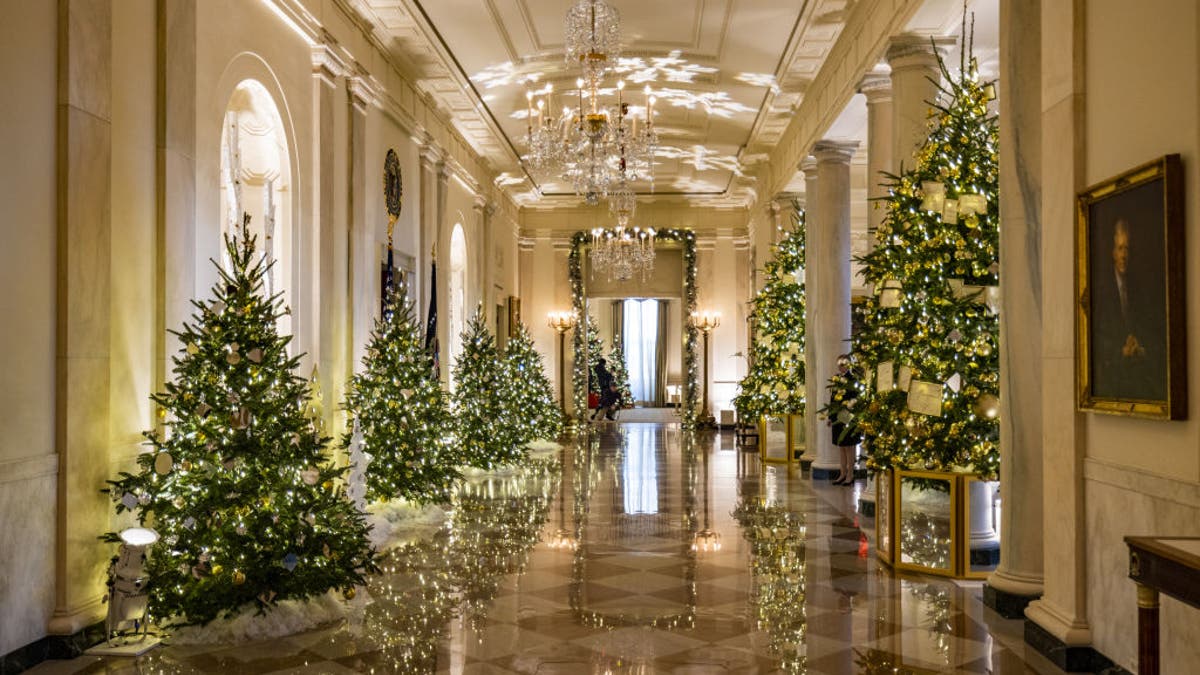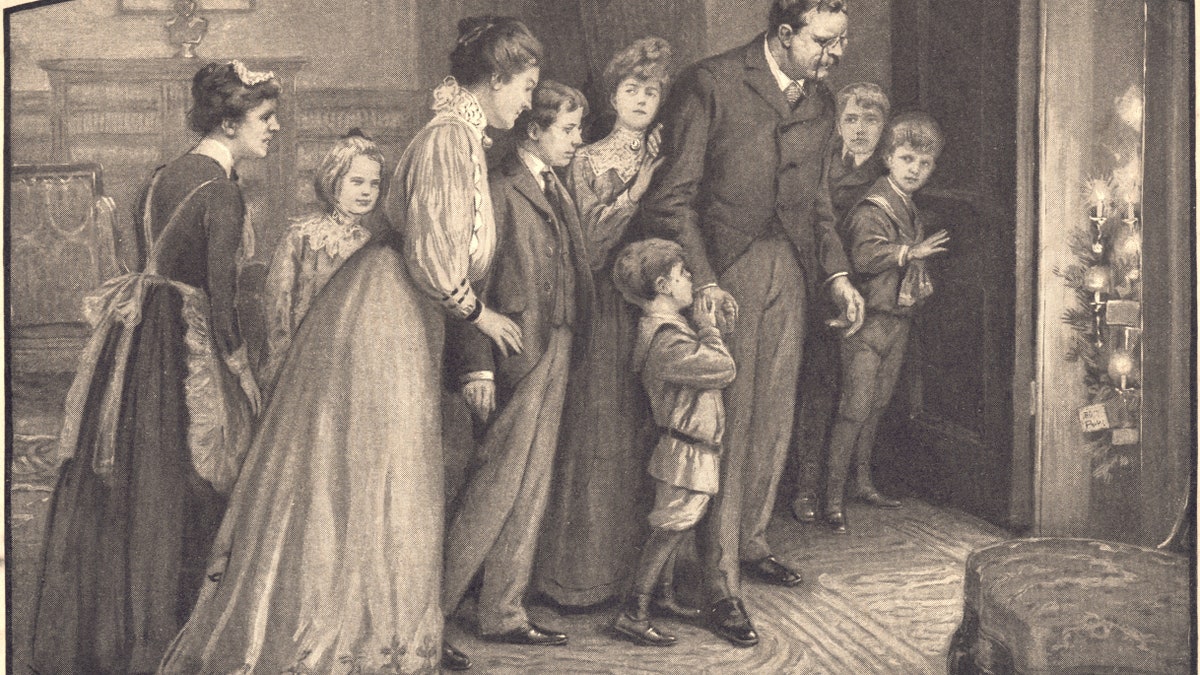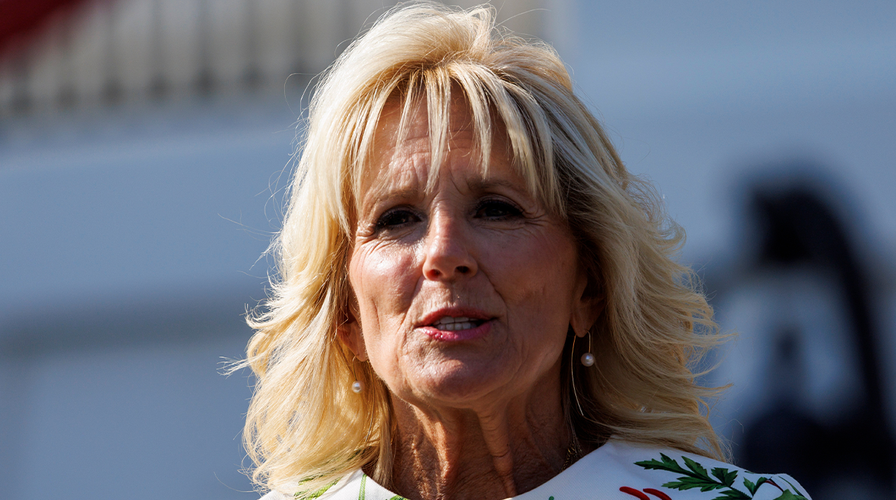WATCH LIVE: First Lady Jill Biden delivers remarks on White House holiday decorations
The First Lady thanks volunteers who helped decorate the White House for the 2022 holiday season.
In late November, first lady Jill Biden announced the 2022 theme for the White House Christmas: "We the People." As she explains: "[T]raditions may vary, but our shared American values — a belief in possibility, optimism, and unity — endure each season."
Mrs. Biden’s articulation of "our shared American values" could use some work. It is odd to speak of a belief in optimism when optimism is itself a belief. The White House’s explanation of what unites us was more satisfactory last year: "faith, family, and friendship; a love of the arts, learning, and nature; gratitude, service, and community."
Fortunately, the first lady’s décor is better than her diction, and her holiday choices have been well received. Her predecessor, Melania Trump, did not fare as well.

An ornament of a portrait of U.S. President Joe Biden and first lady Jill Biden is hung on a Christmas Tree in the State Dining Room of the White House during a press preview of the holiday decorations November 29, 2021 in Washington, D.C. (Alex Wong/Getty Images)
Although the 2019 and 2020 Christmases had tasteful and even stunning decorations throughout the White House, 2017 and 2018 each had a hallway dominated by a gauntlet of tall, monochromatic objects (white twigs and red Christmas trees, respectively). The effect drew comparisons to "The Shining" and "The Handmaid’s Tale." I suspect that Mrs. Trump was influenced by a model’s chic minimalism that works well in a photo shoot but poorly in spaces that are supposed to be more family friendly.
It was Jacqueline "Jackie" Kennedy who started the tradition of a White House Christmas theme by decorating the tree in the Blue Room in 1961 with figures from the "Nutcracker" ballet.
Later first ladies such as Lady Bird Johnson, Pat Nixon, Betty Ford, Rosalynn Carter, and Nancy Reagan tended to focus on early Americana—the colonial period, the Victorian era, American folk art, etc. And like any other responsible matriarch, the first ladies did not hesitate to recycle ornaments from previous years or administrations. Sometimes, they recycled entire themes: both Barbara Bush (1990) and Hillary Clinton (1996) revived Kennedy’s "Nutcracker" motif.
5 REASONS WHY YOU SHOULD STILL GO TO CHURCH ON SUNDAY, EVEN IF IT'S CHRISTMAS
Has the White House Christmas theme, like almost every quadrant of American society, become increasingly politicized? It is difficult to say, in large part because what is common sense to one person can be politically incendiary to another. Even an ostensibly neutral theme, such as Betty Ford’s "Old-Fashioned Christmas in America," can be seen as a reactionary statement or a nostalgic plea when set against the backdrop of 1970s turmoil and cynicism.

This year’s "We the People," with its citation of the opening lines of the Declaration of Independence, is overtly patriotic, but last year’s "Gifts from the Heart" was not.
The Trump years had "Time-Honored Traditions" (2017), "American Treasures" (2018), "The Spirit of America" (2019) and "America the Beautiful" (2020), but none of those themes is any more political than Laura Bush’s 2008 "Red, White, and Blue Christmas."

NOVEMBER 28: Christmas decorations are seen in the entrance and cross hall of the White House as part of First Lady Dr. Jill Biden's "We the People" decorative theme in Washington, D.C. on November 28th, 2022. (Photo by Nathan Posner/Anadolu Agency via Getty Images)
Here is what we know. First ladies sometimes use the occasion to highlight a cause or disadvantaged group that is close to their hearts. Probably the most explicit example of this is Barbara Bush’s promotion of children’s literacy in 1989 (other White House households, by contrast, have been more indirect with generic themes on stories and storytelling).
CLICK HERE TO GET THE OPINION NEWSLETTER
Another tactic is to tap the skills of artisans that have special significance. Pat Nixon trimmed the 1969 White House Christmas tree with velvet and satin balls made by disabled workers in Florida.
For several Christmases, Nancy "Just-Say-No" Reagan used decorations made by teenagers from Second Genesis, a drug treatment program. And in 1977 Rosalynn Carter used ornaments made by members of the National Association for Retarded Citizens (!).

Theodore Roosevelt's son, Archibald, 8, surprised the First Family by sneaking a Christmas tree into the White House on Christmas Day 1902. The caption reads: "None appeared more astonished than Mr. Roosevelt." The incident helped inspire Americans' interest in Christmas trees at home. George Varian drawing. (White House Historical Association)
But perhaps the most consistent political thread uniting all 61 years of the White House Christmas theme is its safe secularism, at least where Christianity is concerned.
Celebrations of Hanukkah have been held at the White House since the administration of George H.W. Bush and this year they take on added meaning because second gentleman Doug Emhoff, husband of Vice President Kamala Harris, is Jewish.
CLICK HERE TO GET THE FOX NEWS APP
The Christmas tree is, of course, a quintessentially Christian symbol. Contrary to the claim that it is a pagan yuletide holdover, the tree is a combination of the Tree of Life (symbolized by the sweets), the Tree of the Knowledge of Good and Evil (the red balls recall the forbidden fruit), and the Christ Child’s earthly lineage (the lights form a pyramidal family tree).
Nevertheless, America’s first ladies have been careful to downplay the tree’s religious meaning. A beautiful eighteenth-century Neapolitan nativity scene has been in the White House since 1967, but it is on display in the East Room, a safe distance from the Christmas tree in the Blue Room. For the sake of civic unity, it remains safer to celebrate America in general instead of Jesus’ birthday.


